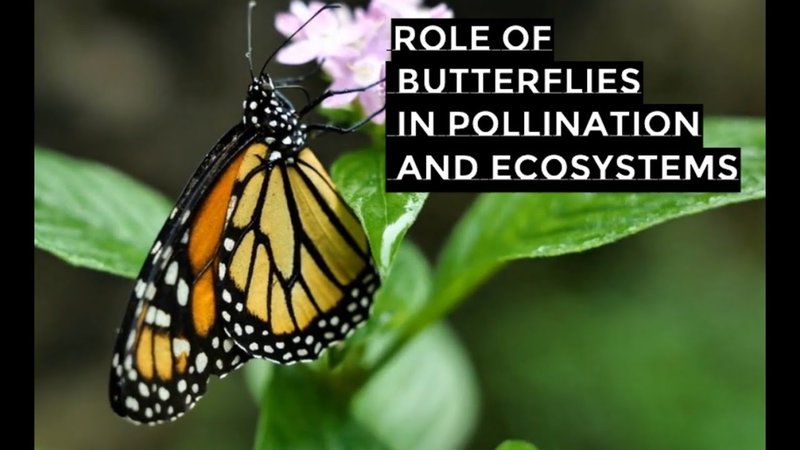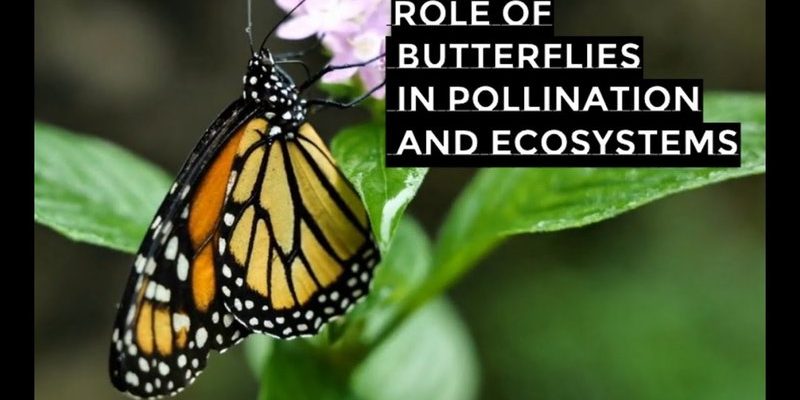
Butterflies are often considered indicators of a healthy environment. Their presence signals that an ecosystem is thriving. Unfortunately, their populations are declining due to habitat loss, climate change, and pesticide use. This makes understanding their role more important than ever. So, let’s dive in and explore how butterflies contribute to our ecosystems, why they’re crucial, and what we can do to protect them.
Butterflies as Pollinators
One of the biggest contributions butterflies make to ecosystems is their role as pollinators. Just like bees, butterflies transfer pollen from one flower to another while they sip nectar. This process is crucial for plant reproduction and helps create seeds and fruits. You might be wondering, why does this matter?
Pollination is essential for the growth of many crops and wild plants. Did you know that about 75% of the world’s flowering plants depend on animal pollinators? That includes a large number of fruits and vegetables we enjoy every day. Without butterflies, many plants would struggle to reproduce, leading to decreased biodiversity. This could impact the entire food chain, from small insects to larger animals—and even us!
How Butterflies Pollinate
Butterflies have specific behaviors that make them effective pollinators. They typically feed on nectar from various flowers, but they also get pollen stuck to their bodies. As they move from flower to flower, they transfer this pollen, facilitating the fertilization process. Think of it like a quirky little delivery service, where each butterfly is a courier, ensuring the plants get what they need to thrive.
Moreover, some flowers have evolved to attract butterflies specifically. Bright colors, strong scents, and even specific shapes are designed to entice these pollinators. For example, milkweed, which is the host plant for monarch caterpillars, has a unique structure that makes it easy for butterflies to access nectar while collecting pollen.
Butterflies and Biodiversity
Biodiversity is the variety of life in a particular ecosystem. Butterflies contribute significantly to this diversity. By pollinating various plants, they help maintain healthy ecosystems where different species can thrive. This diversity offers numerous benefits, including resilience against disease and climate change.
When butterflies thrive, they positively impact other species. Plants that butterflies pollinate provide food and habitat for many animals. For instance, birds often rely on seeds and fruits developed from these pollinated flowers. In turn, a diverse plant life supports a wide range of insects and other creatures, creating a balanced ecosystem.
The Impact of Butterfly Decline
Unfortunately, many butterfly populations are declining due to various human activities. Habitat destruction, like urban development and agricultural expansion, limits their natural environments. Moreover, the use of pesticides harms not just butterflies but other beneficial insects too. This decline can lead to weaker ecosystems, affecting everything from plant growth to animal populations.
Imagine a beautiful tapestry woven with many colorful threads. If you start pulling out those threads, the entire tapestry weakens, losing its vibrancy and structure. Similarly, the decline in butterfly populations can unravel the connections in our ecosystems, leading to unpredictable and often harmful changes.
Butterflies as a Food Source
Another important role butterflies play is as a food source for various animals. Birds, bats, and even some reptiles rely on butterflies and their caterpillars for sustenance. Think of butterflies as part of a natural buffet, offering a nutritious meal that helps sustain other wildlife.
By supporting these species, butterflies help maintain a balanced food web. For example, if bird populations diminish due to a lack of butterflies, the entire ecosystem may feel the impact. Other insects might proliferate, leading to an imbalance that could affect plant health and growth.
The Interconnectedness of Life
The web of life is intricate and interconnected. Each species, no matter how small, contributes to the larger system. When we look at butterflies, we see just one piece of that puzzle. They interact with plants, other insects, and animals, creating a delicate balance that supports life. Protecting butterflies means taking steps to preserve this web, ensuring that all life can thrive together.
Conservation Efforts for Butterflies
With all this in mind, it’s clear that protecting butterflies is vital for our ecosystems. Fortunately, there are several ways we can help. Simple actions, like planting native flowers in our gardens, can provide essential habitats for butterflies. Native plants are often better at attracting local species because they’ve co-evolved with butterflies and other pollinators.
You might also consider creating butterfly-friendly spaces in your backyard. This means avoiding pesticides, providing food sources, and including plants that cater to their lifecycle, like host plants for caterpillars. Every little bit helps, and creating more butterfly habitats contributes to their survival and, in turn, the health of our ecosystems.
The Role of Organizations
Many organizations are working hard to protect butterflies and their habitats. They focus on raising awareness, conducting research, and implementing conservation programs. By supporting these efforts, whether through donations or volunteer work, you can play a role in butterfly conservation.
Some initiatives even involve creating butterfly corridors—connected habitats that allow butterflies to travel safely between areas. This approach helps mitigate habitat fragmentation, which is often a significant threat to their survival.
The Joy of Butterflies
Aside from their ecological roles, butterflies bring joy to countless people. Watching them flit from flower to flower can be a calming and delightful experience. Many cultures see butterflies as symbols of transformation and hope. They remind us of the beauty of nature and the importance of caring for our environment.
Incorporating butterfly habitats in parks or community gardens can also enhance local spaces, making them more vibrant and inviting. It’s incredible to think that by nurturing butterflies, we’re not just helping our ecosystems—we’re enriching human experiences, too.
A Personal Connection
If you’ve ever paused to admire a butterfly, you know there’s something magical about them. They have the ability to evoke a sense of wonder and peace. This personal connection is essential because it drives many of us to take action. When we recognize the beauty and importance of butterflies, we become more motivated to protect them and their habitats.
In summary, butterflies are more than just pretty insects. They play crucial roles in our ecosystems as pollinators, contributors to biodiversity, and as food sources for other wildlife. Their decline poses a significant risk to the health of our environments. By understanding the importance of butterflies and taking steps to protect them, we can help ensure that these beautiful creatures continue to adorn our gardens and fields for generations to come.
So, the next time you see a butterfly flutter by, take a moment to appreciate its role in the intricate tapestry of life. Together, we can make a difference for these gentle pollinators and the ecosystems they support.

